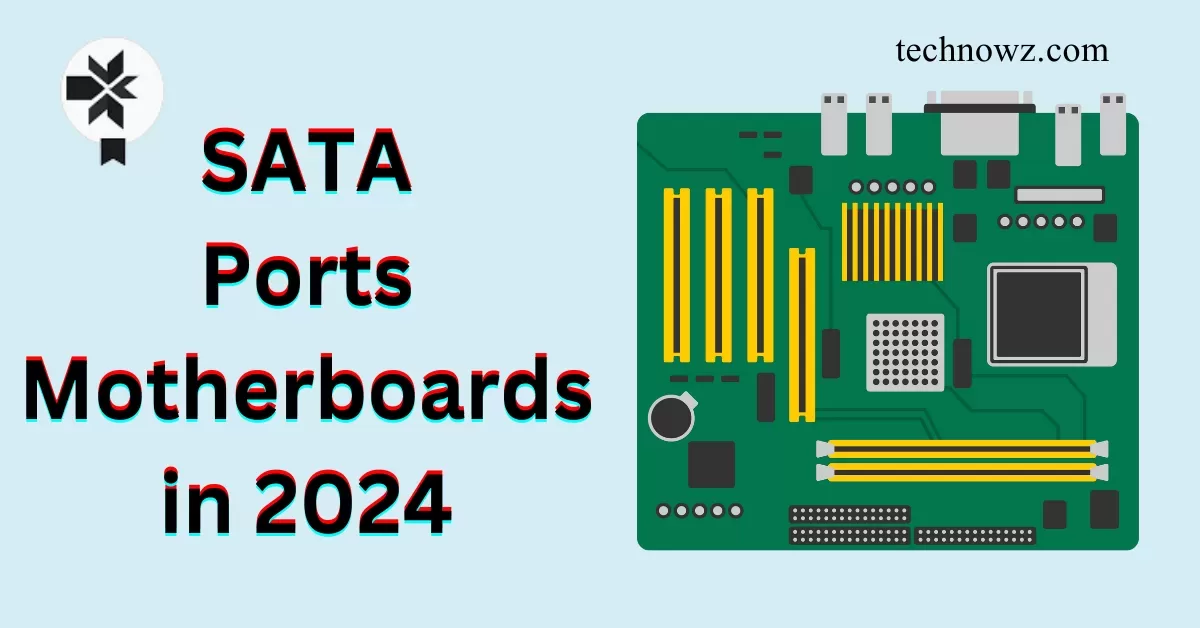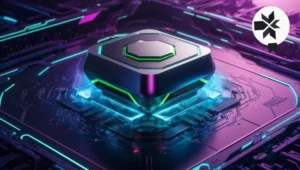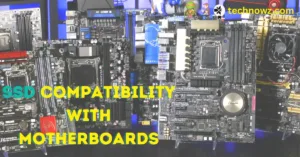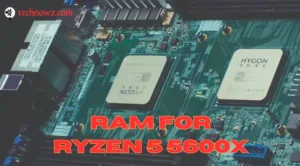Even in 2025, motherboard consumers will still find value in the more than two decades-old SATA storage interface standard. When assessing the performance of board storage, SATA runs the danger of being disregarded in favor of NVMe SSDs. But if SATA is entirely ignored, you run the danger of overlooking ongoing use cases and implementation issues when upgrading.
This guide aims to demystify SATA’s role on contemporary motherboards by exploring facets like:
🖥️ SATA technology refresher – speeds, interfaces, pros/cons
🖥️ Ongoing use cases where SATA still shines
🖥️ Ongoing use cases where SATA still shines
🖥️ Assessing SATA port allotments on new boards
🖥️ Latest updates like SATA Express and hot plugging
🖥️ Matching SATA needs to budget during upgrades
At this point, participants will have a fresh understanding of how to carefully balance SATA capabilities against specific needs when choosing a motherboard. Now let’s begin disentangling.
Table of Contents
ToggleSATA Port Motherboard Basics
SATA, or Serial ATA, is an interface used to connect storage drives like hard disk drives (HDDs), solid state drives (SSDs), and optical drives to a computer’s motherboard. SATA ports in Motherboards provide the physical connectivity and communication protocols to allow high speed transfers between the drive and system.
SATA standards have evolved over the years:
- SATA I – The first SATA generation released in 2003. It provided transfer speeds up to 1.5 Gb/s.
- SATA II – Released in 2004, SATA II doubled the bandwidth of SATA I to 3 Gb/s. This allowed for faster HDDs and early SSD adoption.
- SATA III – The current generation, also known as SATA 6G. Introduced in 2009, SATA III runs at 6 Gb/s bandwidth. This enables support for the fastest modern SSDs.
Most new motherboards today contain SATA III ports to support attaching high performance SSDs as either boot drives or secondary storage. However, SATA II ports are still commonly found as well for backwards compatibility.
Compared to other storage interfaces like M.2 or PCI Express, SATA ports have some limitations in bandwidth. However, they remain a cost-effective and widely compatible option for connecting both HDDs and SSDs in a desktop PC build.
SATA Use Cases in 2025
Even with the rise of new high-speed storage interfaces like M.2 and PCIe, SATA ports and devices will continue to play an important role in 2025 and beyond. Some common use cases include:
- Hard Disk Drives (HDDs) – While HDDs are decreasing in popularity compared to SSDs, SATA-based HDDs still offer high capacities at low costs. They work well for bulk media storage and backups.
- Solid State Drives (SSDs) – SATA SSDs remain a cost-effective option compared to faster NVMe models. SATA SSDs provide enough speed for boot drives and primary storage for most users.
- Optical Drives – DVD, Blu-ray, and CD drives predominantly use SATA connections. For legacy media access or burning discs, SATA optical drives will remain relevant.
The ubiquity of the SATA interface provides excellent backwards compatibility for devices. This allows combining and matching both new and older components when building or upgrading a desktop PC.
However, for high-end use cases like gaming, video editing, or running VMs, SATA does have limitations versus cutting-edge NVMe SSDs. The maximum ~550 MB/s bandwidth of SATA III may become a bottleneck compared to blistering NVMe transfer speeds exceeding 3000 MB/s.
For most mainstream users though, SATA SSDs and HDDs will continue meeting needs for affordable and responsive storage in 2025. The interface retains advantages in near-universal compatibility and available options.
SATA Implementation on Motherboards
The number of SATA ports included on a motherboard can vary greatly based on the target consumer segment:
- Entry-level consumer boards may have just 2-4 SATA ports. This allows connecting a boot SSD and optional HDD.
- Mainstream consumer models typically have 4-6 ports. Six ports permits attaching a few SSDs and HDDs.
- High-end consumer boards could have up to 8 SATA ports. This enables more drive connectivity.
- HEDT (High End Desktop) boards designed for workstations may offer 10 or more SATA ports.
On many boards, some SATA ports are implemented directly into the chipset, while others go through an additional SATA controller. This allows vendors to offer more ports.
Port placement and clustering also factors into multi-drive support. Ideally, ports are well spread out to allow installing multiple drives without mechanical interference. Clustering ports in sets of two or four makes connecting drives simpler. Higher-end boards also include right-angled SATA ports. This helps alleviate congestion and makes neatly connecting many drives easier. Overall, SATA design and layout is an important motherboard consideration.

Latest SATA Features
SATA Express – This interface combines PCIe and SATA for speeds up to 16 Gb/s. It allows using either PCIe or SATA drives. However, SATA Express saw little adoption and is now obsolete.
SATA Hot Plug – This feature allows inserting and removing SATA drives without shutting down the system. It requires operating system support and external SATA connectors on the motherboard rear I/O.
Hybrid SATA/NVMe Ports – Some high-end boards include shared ports that work with either SATA or NVMe drives via a manual switch or auto-detection. This aids flexibility.
Quad SATA – An incremental update to deliver better performance consistency across multiple SATA ports when used simultaneously.
SATA DOM Support – A feature to allow connecting SATA-based Device On Module (DOM) storage often used in embedded and rackmount systems.
While the core SATA interface remains stable, motherboard vendors continue adding functionality around improved flexibility, connectivity, and multi-drive performance. These extras help SATA maintain relevance even as newer NVMe storage gains traction.
SATA Port Needs Assessment
When picking a SATA port motherboard, take time to consider your current and future storage drive needs to determine the ideal port count:
- For a single drive system, 4 ports allows room for 1 SSD and 1 HDD. A budget board may suffice.
- 6-8 ports permits dual drive setups with 2-3 SSDs and 1-2 HDDs. Mainstream consumer boards often provide 6-8 SATA connections.
- With 8+ ports, you can run multi-SSD configurations for speed, RAID arrays for redundancy, and still add classic HDDs. High-end consumer boards may offer this.
- For workstations with robust storage demands, choose boards with 10 or more SATA ports. This enables connecting many SSDs and HDDs in a high performance array. HEDT platforms provide maximum SATA connectivity.
Always consider your use case – a power user running dozens of drives will need far more SATA ports than a typical single drive gaming PC. Right size your motherboard selection for current needs, but include headroom for future expansion where possible.
Final Thoughts
In 2025 PC constructions, the guideline highlights the lasting relevance of SATA interface for storage. It implies that SATA SSDs and HDDs will stay common in systems used in homes and offices. For most users, a mainstream motherboard with 6–8 SATA ports is more than enough, providing adequate speed and communication using the SATA III standard at 6Gbps. Those that want large amounts of storage or better NVMe SSD speeds may choose premium boards with over ten SATA connections. The suggestion states that SATA is still dependable and efficient for the majority of users’ demands in a contemporary system, and it advises concentrating on present needs rather than being sucked into speculative trends.
For most users, 6-8 SATA ports offer a good balance. This allows connecting several SATA SSDs and HDDs. Gamers or power users may want 8-10+ ports.
SATA 2 ports have a maximum bandwidth of 3Gbps while SATA 3 (also called SATA 6Gbps) offer double the speed at 6Gbps. Always connect SSDs to SATA 3 for peak performance.
No, SATA Express is an alternate interface that combines PCIe and SATA. It is not widely used anymore. Regular SATA ports use the standard SATA data and power connectors.
On motherboards with external SATA ports and hot swap capabilities, you can safely insert and remove SATA drives without powering down the PC. But it requires OS support.






